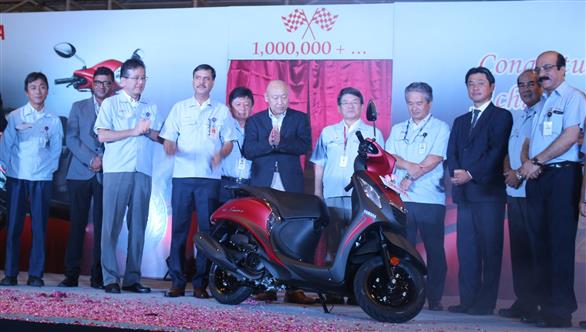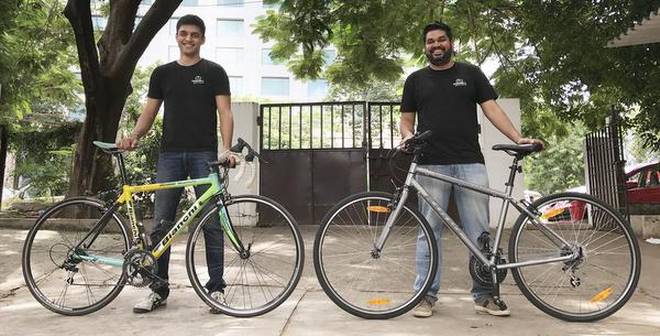Monthly Archives: September 2017
25
24
Yamaha India rolls out 1 Millionth two-wheeler from Chennai factory
India Yamaha Motor (IYM) Pvt Ltd on Friday achieved a milestone by rolling out the one-millionth two-wheeler to be produced at its Chennai, Tamil Nadu factory in two-and-a-half years of operations. The millionth two-wheeler to be produced at the Yamaha premises is a unit of the Yamaha Fascino. India Yamaha Motor has reached this figure on the back of good sales of its two-wheelers including the Ray Z, Ray ZR and Alpha scooters, and the Saluto and Saluto RX motorcycles. Yamaha had begun operations at the Chennai facility in March 2015 with an initial production capacity of 4.5 lakh units per year, ramping it up to 6 lakh units this year. India Yamaha Motor now aims to produce 9 lakh units per annum by 2019 at the Chennai factory and 7 lakh units at its facility in Surajpur, Chattisgarh, taking total production to 1.6 million units in two years. Yamaha recently launched the Fazer 25 faired version or its FZ25 250cc motorcycle. To boost sales, Yamaha has also been launching scooter boutiques in select cities of the country.
IYM deputy MD Riuji Kawashima said that the company would continue to enhance the production facilities in India to better serve the Indian market. Yamaha has so far invested Rs 1,300 crore in the Chennai Factory and plans to invest more than Rs 200 crore by 2018. Out of one million products manufactured from the Chennai Factory, 8.5 lakh units have been manufactured for the domestic market and remaining 1.5 lacs units for the export market including African market as well as ASEAN and Latin American markets. Yamaha Fascino is the most produced model with 3.7 lakh units. The production percentage ratio of the scooter & motorcycle production at the factory is 7:3 right now. The models with highest export numbers were the FZ series, Ray ZR, and Fascino.
source: http://www.overdrive.in / OverDrive / Home> News / Team OD / September 22nd, 2017
Art director GK dies in Chennai aged 60
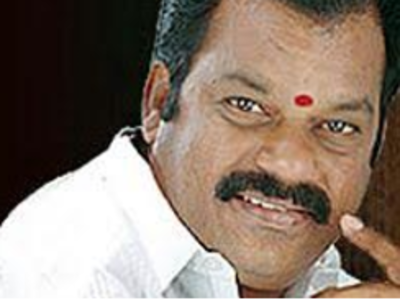
Chennai :
Veteran film art director Gopi Kanth, better known as GK, died in Chennai in the early hours of Thursday due to a heart ailment. He was 60.
G K was admitted to Apollo Hospitals on the Greams Road on Saturday. He breathed his last in the hospital around 12.30am.
G K is survived by wife Nagavalli, a son and a daughter.
G K had worked with stars like Raninikanth, Kamal Haasan and Vijay in films such as ‘Baba,’ ‘Arunachalam,’ ‘Avvai Shanmugi,’ ‘Thiruppachi’ and ‘Sivakasi’.
The body was brought to his home at Valasaravakkam here (No 16, 2nd Street, Anbu Nagar, Sridevi Garden, Valasaravakkam.)
source: http://www.timesofindia.indiatimes.com / The Times of India / News> City News> Chennai News / by Abdullah Nurullah / TNN / September 21st, 2017
The man behind the legend: review of ‘MGR: A Life’
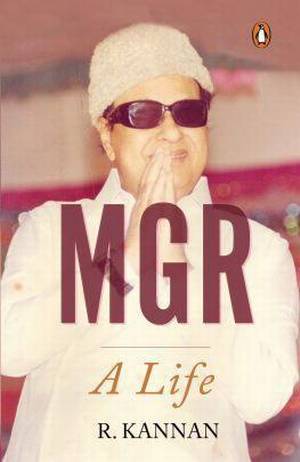
In his centenary year, a perceptive biography presents MGR with all his achievements and faltering, his personality and politics
M.G. Ramachandran never ceases to fascinate. In the 30 years since his death, there are signs to show that his popularity in Tamil Nadu has not declined. If a digitised version of one of his movies from the 1960s is released, it still runs to packed houses. It is his centenary year, and the same veneration that he commanded among his followers seems to prevail even among a generation that could not have seen him in his heyday.
R. Kannan’s informative biography brings out the major reasons for the MGR phenomenon: an everlasting reputation for charity, the trust he inspired in the masses that he stood for their welfare, and his carefully cultivated image as a do-gooder. What makes this a perceptive account is that it rarely descends to hagiography, and touches, albeit in a nuanced way, the man’s undoubted shortcomings.
Early episodes in MGR’s life accounts are revealing. Much of this part is perhaps drawn from MGR’s own memoirs and from contemporary accounts, but what Kannan offers is the first cogent narrative of MGR’s early years, the debilitating poverty in which he grew up, the role of his mother and brother in shaping his outlook in life. The portrayal of Ramachandran’s poverty-stricken life as a child theatre artiste makes for a moving read. Too poor to go to school, he and his brother lived through ordeals and torments in a theatre company as they had no other means of livelihood. MGR had early exposure to both the survival throes and the petty jealousies of an incipient theatre and cinema career. These experiences informed his welfare-centric policies several decades later as chief minister.
Tinsel world stories
Many pages are devoted to MGR’s experiences in the tinsel world, understandably so, as this was the medium that was used to project his image. Initially used by the Dravida Munnetra Kazhagam to draw crowds, he was somehow catapulted into the political limelight due to various factors. His mentors in theatre and politics were not his only influences. Even those who saw him as a threat and still others who underestimated his rise in the party, were also indirect motivators for his aspirations.
Almost all of MGR’s film songs were written with an eye on his emerging political career. Even though this is well known, the author’s engaging account — as well as free-wheeling translations — of the various songs that made him a hero, a revolutionary, a friend of the masses, a philanthropist, a teetotaller and the scourge of evil, helps in understanding the direction in which he was heading in politics.
There is a lot about his career in cinema, but somehow, there seem to be too many details about how he signed up particular films and how he landed a certain role. There is not enough about many other aspects of his film career, including his directorial ventures and his insight into various trades in the industry. Given the build-up in the biography about his career trajectory, the account of his three successive stints as chief minister can be seen as sketchy. As this part is narrated mainly through public events and major political developments, the reader does not get a full insight into the functioning of MGR as an administrator. At the same time, the author does convey the essentials. One gets a sense of how MGR did not believe in the core Dravidian principle of rationalism and opposition to religion, of how he lived in perpetual fear of the Centre and how tax investigations influenced his political decisions.
Chief minister’s diary
As chief minister for 10 years, he relied on intuition and the unique connect he had with the masses in making major announcements. Of course, there were blunders and long phases of inactivity, economic and administrative stagnation and political uncertainty because of his bouts of illnesses. The transition from a person who managed to run a relatively clean government to one who allowed corruption to acquire huge proportions has been captured. The extent to which the liquor trade and the privatisation of engineering and medical education contributed to it is amply clear in the account.
Nearly a century ago, E.M. Forster contrasted the western or English character with that of the easterners. “The Oriental has behind him a tradition of kingly munificence and splendour,” he wrote, contrasting these qualities with the “middle class prudence” of an Englishman. Forster would have been delighted had he met someone with MGR’s reputation for munificence.
But MGR had other qualities that monarchs are famed for. He rewarded loyalty and punished disloyalty. He rarely brooked dissent, although political heavyweights within his party did take him on occasionally. Farmers and government employees, political rivals and the media, all bore the brunt of his authoritarian style, although he sometimes tried to balance the strong-arm tactics with occasional sops. He was whimsical to a fault, once attempting to undermine caste-based reservations by introducing economic criteria and then rolling back the decision and raising backward classes quota from 31% to 50%. This biography does not miss any of this.
When writing about a larger than life figure, one tends to place more emphasis on the aura and mythology around the person and less on the man himself. R. Kannan manages to tease out a balanced picture of the man, with all his idiosyncrasies and foibles, his achievements and faltering, his personality and politics.
MGR: A Life; R. Kannan, Penguin Random House, ₹499.
source: http://www.thehindu.com / The Hindu / Home> Books> Reviews / by K. Venkataraman / September 16th, 2017
Voices that have to be heard
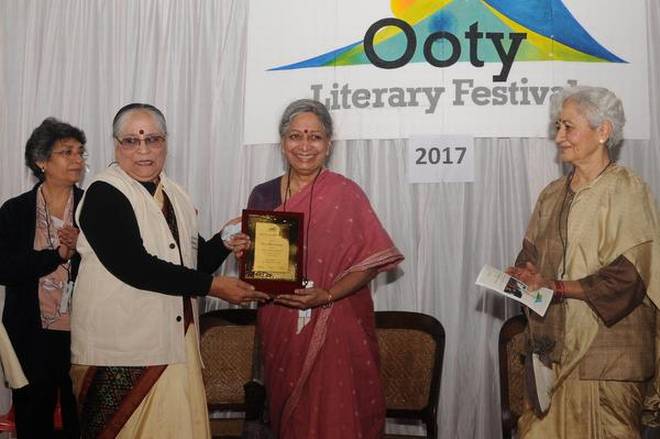
From feminism to storytelling and mythology to war, the second edition of the Ooty Lit Fest embraced the power of the word.
Amid the joy of the written word, the hues of the pages, the illustrations and publications, a sense of gravity was palpable among authors, publishers and the audience. Unsurprisingly, the second edition of the Ooty Lit Fest held in the Nilgiris Distict Library expressed concern over the growing intolerance of expressed opinions, loss of lives of journalists and free thinkers, politicisation of the media and how non-compliance was unacceptable in the present scenario. Authors and moderators in every panel discussed the importance of helping the younger generation realise the importance of compassion.
The keynote address was delivered by Padma Shri Geeta Dharmarajan, founder-director of Katha, who was also presented with a Lifetime Achievement Award. She expressed concern about the ever-widening gaps between children in rural schools and elite ones. “Stories are a great equaliser, as all children love stories, books and storytelling.” She reiterated the importance of a movement to initiate and set up community libraries with local readers and storytellers.
Twelve sessions spanning two days had authors and audience deeply engrossed in the state of the written word, new stories and folktales, myths and autobiographies. A session on Feminisms of India saw some very powerful thoughts being expressed. Authors Bama and Urmila Pawar stressed on the trials of Dalit writing while Samhita Arni focussed on mythology and how the perspectives of those stories promote male dominance and hegemony.
Bhama spoke about her autobiographical work Karukku. “I did not write with the idea of publishing. I just followed my thought process. Writing in my village dialect also happened unconsciously. I would be writing about my present when a sudden thought would take me to the past. It was like ‘sitting on a swing, moving forward and backward’. It started a new genre of writing. Many women told me that the book inspired them. All I can say is please write. Your stories have to be told; your voices have to be heard.”
Samhita Arni had two books on display: Sitas’s Ramayana and The Missing Queen. While the first is a graphic novel for children, the other questions gender bias and double standards in society. “How we tell our stories shapes the beliefs of the next generation,” said Arni. Arni thinks our stories must instigate children to question gender, caste divisions and unfair practices. “It is important to look for stories told through the oral traditions in indigenous societies. You will find so much variety with local beliefs and interpretations. That is how I wrote Sita’s Ramayana.” The book is a collaboration with Moyna Chitrakar, a scroll painter in the Patua folk art tradition. The art of scroll painting, was restructured to the graphic novel format and Arni wrote the text.
An interesting dialogue with Gopalakrishna Gandhi titled “A look at the literary vehicles of our freedom struggle” brought home the fact that books are not the only vessels of thought. We need to take into account the songs, newspapers reports, especially those of publications like Swadesamitran, Mathrubhumi, and Mook Nayak. When asked about the books that shaped his thoughts, he warned, “No book should become a Bible. Just read it with its strength and weaknesses.” In another session, author Vithal Rajan said, “I searched for stories about the role of the Indian Army in World War II or all the battles that the British fought and discovered that all leadership roles and victories led by Indian army soldiers were deliberately left out of the documentation by the British. However, they do exist in the homes of the soldiers.” He called for NGOs and historians to look at the possibility of documenting these stories and bringing them into public arena to fill the gap of 500 years of Indian valour during the British Rule.
Dharmarajan said, “At Katha —with various partners like CRY, Amazon, His Holiness The Dalai Lama, and others —we are re-introducing the Each One Teach One concept in urban schools. When children learn to teach another child, there is empathy, compassion, sharing of knowledge which lays a strong foundation for future society.”
Vanamala Viswanatha, Visiting Professor at the School of Education, Azim Premji University, Bengaluru, took the stage in the last session titled “Gamaki and the Life of Harishchandra”. She has translated Harishchandra Kavyam written by Raghavanka. Using the Gamaki or kaavya vachana, a form of storytelling that involves singing as well, she moved the audience to tears with her beautiful rendering of the story.
“We want to keep the festival small, cosy and intense,” said Geetha Srinivasan, one of the. “Jerry Pinto, our advisor, helped us to connect with the authors and formulate the sessions. The Fest wishes to attract new authors, unheard voices and authors who write for a cause. May be we will have a fest of women authors only…and may be one for children as well. We are lucky to have the Nilgiris District Library, which inspires us to conduct more such events.”
Referring to Viswanatha’s session, Srinivasan added, “We must possibly think of having this kind of a session from a different language and culture each year. It strikes a chord and brings back to the forefront values that are important and all but forgotten.”
Lives of Dalit women
Urmila Pawar’s Marathi autobiography Aaidan (The Weave of My Life: A Dalit Woman’s Memoirs) weaves the stories that she heard into her story. The name Aaidan is derived from the Marathi word for basket. She chose the name because her mother was a basket maker and also because the lives of different members of her family, her husband’s family, her neighbours and classmates “are woven together in a narrative that gradually reveals different aspects of the everyday life of Dalits and the manifold ways in which caste asserts itself and grinds them down.”
Translation woes
Mini Krishnan — Editor Translations at Oxford University Press — moderated a session called The Translator, The Translation and The Translated. “The importance of a good partnership that a translator must have with the author and the publisher cannot be over emphasised,” she said. “The translator must understand the emotions and the nuances of languages and the characters, translate, send to the author a few times till author is satisfied that the meaning is right. There are times when the trust is so high and things go well. There are many a translation work that has failed when the relationship and trust never manages to establish.”
Vanamala Vishwanatha talked of the difficulty when the text is an epic or classic and there is no author to consult. In such case, the partnership with language experts, historians and research become important guides to ensure that the translation remains true to the original. Bama recalled how her book was translated into French without checking with her and how it was in total contradiction to what she had written.
source: http://www.thehindu.com / The Hindu / Home> Books / by Archana Dange / September 18th, 2017
19
Life in the bike lane
ChooseMyBicycle, a venture by Abbishek Bharadwaj and Rohit Kuttappa along with two others, offers fully fitted bicycles to clients
It is not uncommon to find cyclists whiz past you in traffic on their way to work or for that matter groups of them take over the roads in the wee hours of the morning on the weekends. Catching on fast amongst the fitness and environmentally conscious, cycling is finding more and more takers in the city. And if you seem to be swaying towards the practice as well and are looking to buy a fully fitted bike to meet your needs, help is at hand with ChooseMyBicycle, the latest startup in the city to address the issue.
The online marketplace provides users with fully assembled bicycles, a feature often not found in other portals, according to Abbishek Bharadwaj, co-founder and head sales at ChooseMyBicycle.
Launched in 2012 as a club by RL Ravichandran, Rohit Kuttappa, Akshay Pillay and Bharadwaj to promote cycling in Chennai, ChooseMyBicycle gradually grew to become a platform for reviews. “People wanted accurate information while buying bikes and so we evolved into an information portal,” says Rohit Kuttappa, co-founder and CEO of the company, “One could compare prices and models on our portal back then. There was no commerce involved. I’d say the business evolved based on consumer needs. So by December 2016 we launched the e-commerce aspect of ChooseMyBicycle and became an online portal that not only provides information and reviews, but also is a marketplace for bicycles that are delivered to the users in a fully assembled state.”
The idea to deliver fully assembled bikes, says Bharadwaj, “stemmed from the fact that while many online portals deliver bikes, they are not fitted. It is then up to people to find a good technician to put the bike together; and that is often challenging. To address this, we take the bicycle from the manufacturer, assemble it completely, pack it in a specially created packaging carton and ship it to the customer. We’ve also tied up with Fix My Cycle to provide after sales services, for ease of access.” Fix My Cycle is an online service that sends qualified bike technicians to the client’s home for bike servicing and repairs.
While the company formally launched in December 2016, they made their first sale in March 2017. Since then, they’ve managed over 600 sales across the country. “We’ve shipped as far as Srinagar, Tinsukia and Kutch,” says Bharadwaj.
“While we stock everything from tricycles for toddlers to performance bikes for adults, we find that the average selling price on our website is between ₹12,500 to ₹15,000. These are for entry level performance bikes. Annually, this sector grows at a rate of 22% to 25% in terms of market scenario,” says Kuttappa.
The company which has so far been bootstrapped and has banked on angel funding is now looking to raise funding to expand the business. “In the next six to 12 months we’re looking to set up ‘experience stores’. These will be spaces where people can’t actually buy a bike, but can try different models and get a feel of it before making a purchase online. And as a brand, we plan to ensure speedy delivery of bikes within a period of three to four days. We’ve already identified logistic hubs for these. And along with Fix My Cycle, we plan to expand services to 48 cities over the next year,” says Kuttappa.
source: http://www.thehindu.com / The Hindu / Home> Society / by Ranjani Ranjendra / September 14th, 2017
